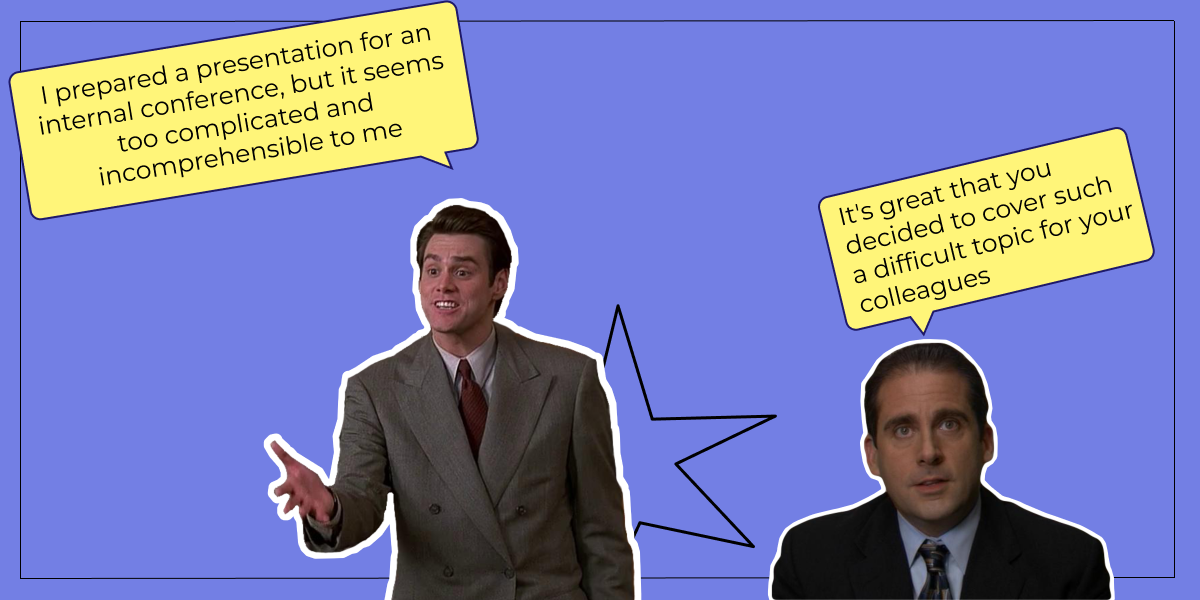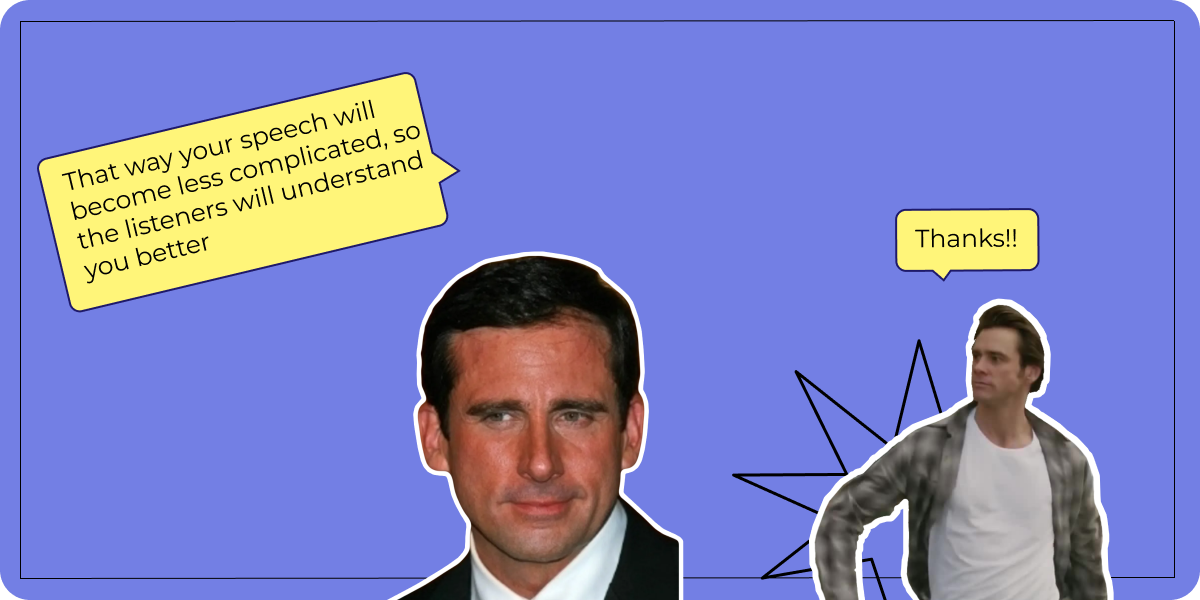How to Give Feedback When Criticism is Inappropriate?
Continuing our series of articles on feedback. In Part 1, we outlined five important principles:
Today we're going to talk about how to express a controversial opinion when criticism is inappropriate.
- Get the right to give a feedback;
- Explain your purpose;
- Describe the context;
- Give your opinion;
- Offer a solution.
Today we're going to talk about how to express a controversial opinion when criticism is inappropriate.
Where Does This Apply?
1) Such an approach is good for creative and team sessions, when you are generating new ideas.
2) Or when you've already put a lot of pieces together, and now you need to put them together or get them up to speed.
3) When you want to push your team to experiment, to try something new.
2) Or when you've already put a lot of pieces together, and now you need to put them together or get them up to speed.
3) When you want to push your team to experiment, to try something new.
How Do You Give Feedback in These Situations?
3 important steps:
1) What Was Good?

2) What Can Be Strengthened?

3) What Would it Lead to?

Such an algorithm would help to keep a room for flexibility and experiments. Otherwise, criticism or an expert position in feedback may create unnecessary boundaries and prevent you from looking wider.
Sounds Perfect, but What's the Catch?
This kind of feedback doesn't work for full-fledged human collaborations because it doesn't involve evaluating the outcome or the behavior at a particular moment.
As a result, your interlocutor gets lost in the task, ceases to understand the overall goal and evaluation criteria.
As a result, your interlocutor gets lost in the task, ceases to understand the overall goal and evaluation criteria.
Recently I fell into this trap: my team and I were doing a huge task related to a client. It dragged on for 2 weeks. We were working day after day, and I've been putting off a task retrospective to the point where we were all done.
Later my colleague said that the process became hard for him. He got lost and stopped understanding what worked and what didn't, by what criteria we were evaluating etc
Use this format of feedback to create safe space for experimentation and free flight of thought, it is helpful for the situations when outside expert position and evaluation of an idea can get in the way.
Later my colleague said that the process became hard for him. He got lost and stopped understanding what worked and what didn't, by what criteria we were evaluating etc
Use this format of feedback to create safe space for experimentation and free flight of thought, it is helpful for the situations when outside expert position and evaluation of an idea can get in the way.
In the next article we will tell you how to give feedback when you need to influence the situation or the behavior of the interlocutor.
Need Help Setting Up a Non-toxic Team Atmosphere?


